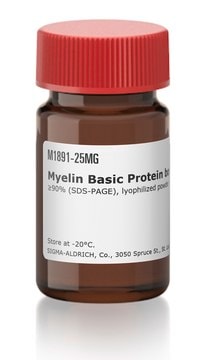P0039
PHPS1 sodium salt hydrate
≥98% (HPLC)
Synonym(s):
4-[2-[1,5-dihydro-3-(4-nitrophenyl)-5-oxo-1-phenyl-4H-pyrazol-4-ylidene]hydrazinyl]-benzenesulfonic acid sodium salt hydrate
About This Item
Recommended Products
Quality Level
Assay
≥98% (HPLC)
form
solid
storage condition
desiccated
color
red
solubility
DMSO: 10 mg/mL, clear (warmed)
storage temp.
2-8°C
SMILES string
O=C1/C(C(C2=CC=C([N+]([O-])=O)C=C2)=NN1C3=CC=CC=C3)=N/NC4=CC=C(S(=O)([O-])=O)C=C4.[Na+].O
InChI
1S/C21H15N5O6S.Na.H2O/c27-21-20(23-22-15-8-12-18(13-9-15)33(30,31)32)19(14-6-10-17(11-7-14)26(28)29)24-25(21)16-4-2-1-3-5-16;;/h1-13,22H,(H,30,31,32);;1H2/q;+1;/p-1/b23-20+;;
InChI key
KLXUVMQUEDKCKG-JBKNFAMTSA-M
Application
Biochem/physiol Actions
Features and Benefits
Storage Class Code
11 - Combustible Solids
WGK
WGK 2
Flash Point(F)
Not applicable
Flash Point(C)
Not applicable
Certificates of Analysis (COA)
Search for Certificates of Analysis (COA) by entering the products Lot/Batch Number. Lot and Batch Numbers can be found on a product’s label following the words ‘Lot’ or ‘Batch’.
Already Own This Product?
Find documentation for the products that you have recently purchased in the Document Library.
Articles
Protein tyrosine phosphatases' catalytic mechanism involves transient phosphorylation.
Our team of scientists has experience in all areas of research including Life Science, Material Science, Chemical Synthesis, Chromatography, Analytical and many others.
Contact Technical Service


![Adenosine 5′-[γ-thio]triphosphate tetralithium salt ≥75% (HPLC), powder](/deepweb/assets/sigmaaldrich/product/structures/319/398/e29221c2-3649-455b-bd33-583bb017ec7d/640/e29221c2-3649-455b-bd33-583bb017ec7d.png)




